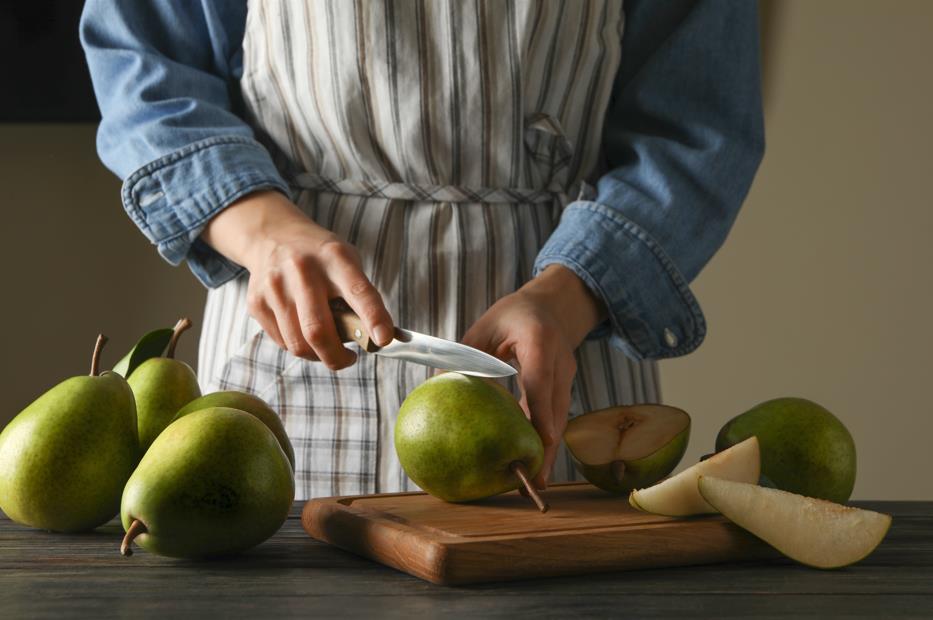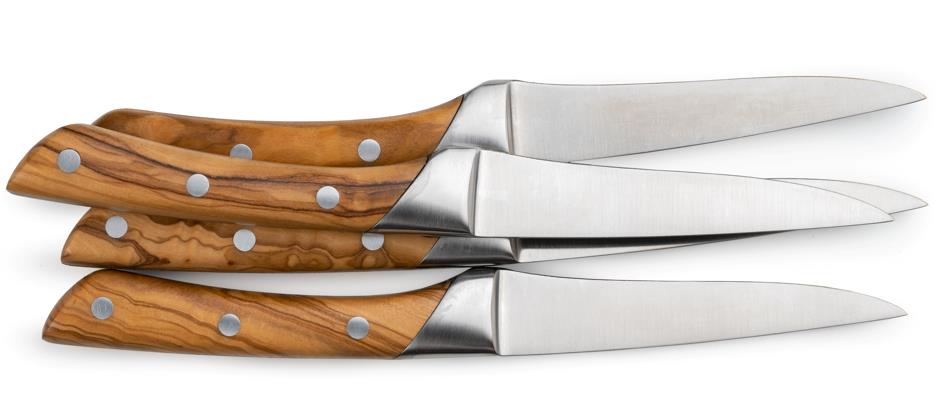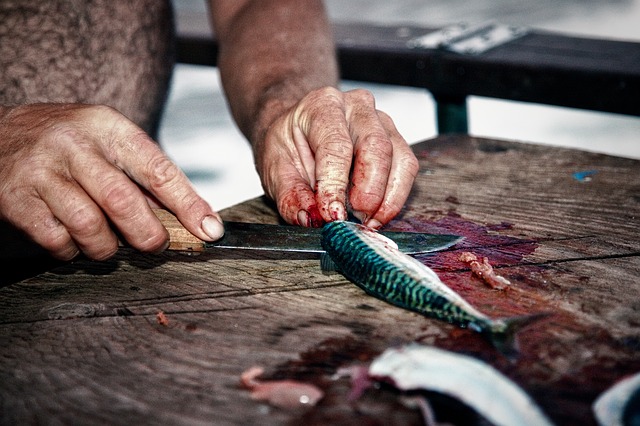The wide variety of different kitchen knives designed with a specific purpose helps cooks in specialized ways. Using the right tools for the job makes preparing ingredients for dishes easier.
However, with so many available kitchen knives and recipes requiring ingredients to be prepared in different ways, having a selection of knives for every different task can get costly pretty quickly.
That’s why utility knives have made a name for themselves to be the jack of all trades. A utility knife surely may not be the best at a specific thing, but it will handle most kitchen tasks with ease, leaving you with fewer knives in the drawer.
In this article, we’ll explain everything you need to know about utility knives, where you can use them, and answer why it might be the only kitchen knife you need when paired with a chef’s knife.
Table of contents
What are utility knives?

Utility knives have a blade that resembles a paring knife but is longer in size. The more extended blade enables cooks to employ it for various kitchen tasks. It comes in handy when slicing medium-sized fruits and vegetables, but utility knives are also great for deboning chicken and other poultry.
The use of utility knives goes well beyond just these and what most people think, and it’s an excellent choice for those that don’t have a knife for every purpose. With a chef’s knife, you will have the two most basic kitchen knives you will ever need and nail everything any recipe demands.
Here are some of the traits you’ll find in a utility knife.
Utility knife characteristics
- Utility knives feature a blade length between a chef’s knife and a paring knife. Measuring around 4 to 7 inches long, it’s at a length that many find optimal for most kitchen tasks.
- Utility knives weigh less than or around 100 grams. This makes it light on your wrist while being able to handle many things without feeling exhausted for extended periods.
- Utility knives have a pointy tip that tapers up from the spine. This feature allows the cook to make delicate cuts that require a lot of accuracy and intricacy. It also helps make slits to break apart ingredients into individual pieces. There are also straight-edged utility knives that provide easier control when chopping fruits and vegetables.
- With a utility knife, you can do things that you’re able to do using bigger and smaller knives, like chopping vegetables on a cutting board or peeling fruits in your hand.
- A wide selection of handles is available in utility knives. You can get them with traditional western handles, curvy handles that fit your palm nicely, or slimmer handles to ease carving meats.
What is a utility knife used for in the kitchen?
As the name suggests, utility knives are beneficial for a variety of kitchen tasks. For most kitchen tasks, you can use a utility knife. Instead of switching between blades, take advantage of the all-rounder traits of utility knives to save time and remain efficient. Here are different ways to employ utility knives.
Use it to slice vegetables and fruits

A lot of the commonly used vegetables like peppers, onions, and potatoes require peeling, trimming, and more. Doing these with a chef’s knife is often difficult as you need to move around the ingredients a lot. With a paring knife, you may find yourself needing something lengthier.
Instead, using a utility knife like a paring knife to handle these tasks will make things more effortless. You’ll also be able to switch to other duties where a paring knife would be difficult for the job, like mincing garlic. Wipe your utility knife with a damp cloth and continue using it with different ingredients throughout the preparation.
The same as vegetables, some fruits require work before you get to slice them. Use your utility knife to peel, trim off the inedible parts, and start slicing. Peel fruits all while having the ability to put them on the cutting board to core and slice to add to your fruit salad.
Handpicked for you
True cutting power in the palm of your hand
Trim and slice meats
A utility knife’s blade is thin and long, making it suitable for carving meats to create thin slices. The length of the blade also makes it manageable for most cooks. If you don’t have much experience slicing meats whether it’s beef, poultry, or fish, a utility knife is going to be a lot easier to handle than a chef’s knife when you don’t have a designated knife.
Let’s say you have a whole ribeye to cut into individual steaks. A sharp utility knife will cut right through large chunks of meat easily. A chef’s knife, for example, will do the same, but some might find it too heavy and thick for the job.
The pointy tip of a utility helps separate unwanted parts like excess fat. Not only is it easy to trim using a utility knife, but it also comes in handy when deboning drums and thighs. Remove joints and scrape the meat off of the bones using a utility knife.
Cutting hard ingredients
When cutting hard ingredients such as certain cheeses like Parmigiano, watermelon rinds, or pumpkin, it’s hard to move the blade as it needs to move through the entire body. This happens mostly with a chef’s knife, and if it isn’t a sharp one, it can get dangerous pretty quickly.
A utility knife’s blade has the perfect shape and size for carving, slicing, and preparing these types of foods as there is less blade to move through, so to speak. It’s a lot more manageable and requires less power, making it easier overall.
Other uses of utility knives

The long, thin blade that comes with the optimal length for most kitchen duties makes utility knives ideal for pretty much everything. Although it doesn’t have a single best feature, utility knives are a knife of all work.
Not quite sure about which knife to use for a job? Take a utility knife and see if it’s suitable. The chances are you will find it beneficial without needing to look for another knife. Use a utility knife to slice, peel, debone, carve, and make delicate cuts to impress your guests.
Do you need a utility knife in the kitchen?
If you don’t have a set of kitchen knives, with each serving a different, specialized purpose, having a utility knife will provide comfort where you’ll manage to get the job done nicely.
However, if you got a knife for every purpose, there isn’t really much need for a utility as you already have the necessary tools. Just in case, having a utility knife ready at your service can relieve you from troublesome situations that the attributes of these knives can help. If a lengthier blade than a paring knife and a pointy tip is something that you need often, investing in a pair of utility knives is worth it.
FAQs about utility kitchen knives
How to clean a utility knife?
Keep your utility knife as clean as possible throughout the time you’re using it. Wiping it here and there with a damp cloth will make washing it later easier. It will also get in the way of oxidation if it’s non-stainless steel like high carbon steel. When it’s time to put it away, wash it thoroughly, rinse, and dry it completely.
What are the best practices for storing a utility knife?
Utility knives don’t take space as much as most other knives and are easier to store. Regardless of where you’re keeping your kitchen knives, whether it’s in a drawer, magnetic block, or strip, ensure that the blades aren’t touching each other. As utility knives feature a thin blade, the edge is susceptible to damages and even chipping when stored in harsh conditions. Learn more about the best knife storage methods.
What to look for when buying a utility kitchen knife?
When buying a utility knife, make sure that the blade is at the shape and length you need. Some utility knives have a similar blade to chef’s knives; some are like santoku knives, and some have serrated edges. Knowing what you want in a kitchen knife and applying those to the utility knife you’re looking for will help you make the right choice.
How to sharpen a utility knife?
You will need to sharpen your utility knife now and then, even if you don’t use it as much. Use a whetstone to sharpen it to give it a fresh cutting edge but make sure to hone it if it’s slightly dull. The more you use your utility knife, or any other kitchen knife for that matter, the duller it will get. Occasionally using a honing rod to realign the blunt edge will make it sharper without picking up a whetstone as often.
Utility knives are handy tools that can be used in almost all cutting duties. Use it to slice medium-sized fruits and veggies, meats, poultry, and have it as a backup knife in case you need the features of a utility knife.
Read more about different kitchen knives on the HDMD Knives blog and shop for our handmade kitchen knife collections.












